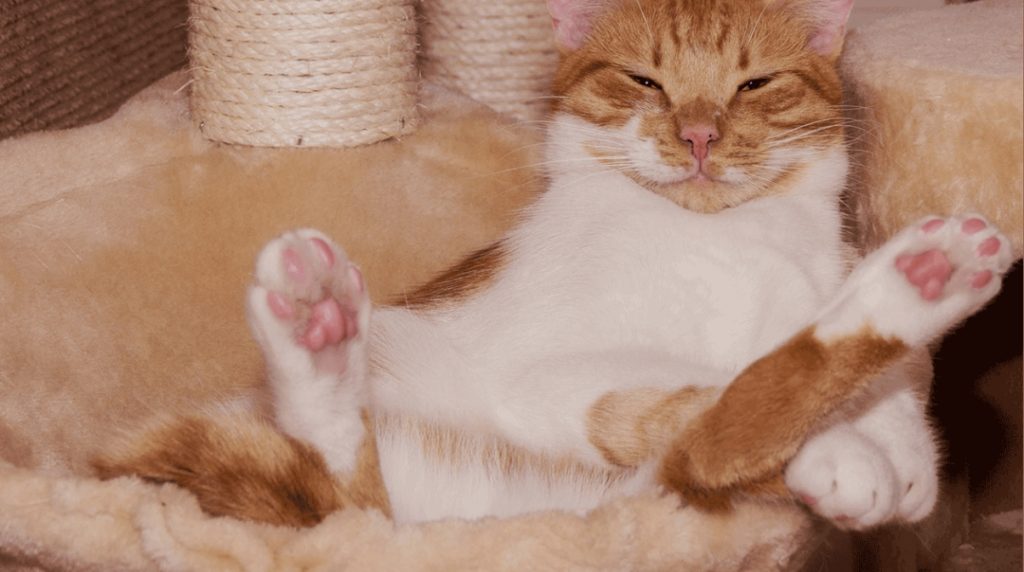Demystifying Cat Training: Effective Methods for Teaching Desired Behaviors

Unlocking the Secrets of Cat Training
Training your cat may appear daunting at first glance, but by delving into the concept of feline training, you might just find an enriching experience that fosters a strong bond between you and your pet. Cats, often seen as aloof or solitary creatures, are entirely capable of learning and adapting through effective training methods. With patience and understanding, you can teach your furry companion to demonstrate desired behaviors, ensuring a harmonious coexistence in your home.
Understanding the core principles of cat training can make all the difference. Here are some compelling reasons this endeavor should not be overlooked:
- Behavior Modification: One of the primary benefits of training is the ability to correct undesirable behaviors. For instance, if your cat has a habit of scratching furniture, training them to use a scratching post instead can prevent damage and maintain a peaceful living environment.
- Enhanced Bonding: Training sessions offer an opportunity for engagement and interaction, which can significantly strengthen your emotional connection with your cat. Positive reinforcement during training can lead to enjoyable moments and shared achievements, increasing trust between you and your pet.
- Improved Interactions: A well-trained cat is likely to respond better to commands, leading to smooth and enjoyable interactions in daily life. Whether it’s coming when called or sitting for a treat, these simple commands can make living with your feline friend far more manageable and rewarding.
Many cat owners may feel daunted by myths surrounding training, such as the idea that cats cannot be taught like dogs. In reality, effective training methods are accessible and can be tailored to a cat’s distinct personality. For example, some cats may respond well to clicker training, which utilizes a distinct sound to signify that they have performed the desired action, followed by a reward. This method taps into a cat’s natural instinct to explore and play, making learning a fun experience.
As you embark on the journey of training your cat, it is essential to remember that patience is key. Consistency in commands and rewards, paired with understanding your cat’s moods and preferences, can lead to successful outcomes. Training should be viewed as a series of small steps that build upon one another, ultimately leading to a well-behaved, happy feline companion.
In this article, we will delve into various effective methods to train your cat with success, empowering you with the knowledge needed to unleash your cat’s full potential. Prepare to step beyond the mystery and discover practical strategies that can transform your cat into a model companion while enhancing your relationship in the process.

LEARN MORE: Click here to discover the signs of stress in pets
Understanding Cat Behavior: The Foundation of Training
Before diving into specific training methods, it’s essential to grasp the underlying aspects of cat behavior. Unlike dogs, which have been domesticated for centuries, cats retain many of their primal instincts and traits. This evolutionary background influences their learning processes, making it crucial to approach training from a perspective that respects their unique nature.
To ensure effective training, consider the following fundamental elements about feline behavior:
- Curiosity and Exploration: Cats are naturally curious creatures. They thrive on exploration and play, which you can harness during training sessions. Incorporating toys and interactive elements can keep your cat engaged and eager to learn.
- Independent Spirits: Unlike dogs, cats often prefer to act on their terms. This independence means that training should align with their motivations—whether that’s food, playtime, or affection. Recognizing this will help you tailor your methods to suit their preferences.
- Positive Reinforcement: This method revolves around rewarding your cat for desired behaviors rather than punishing them for unwanted ones. Utilizing treats, praise, or play as a reward can encourage your cat to repeat desirable actions, creating a win-win scenario.
Once you understand your cat’s intrinsic motivations and behaviors, you can begin exploring structured training methods that cater to their needs. One popular approach among cat owners is the use of clicker training. This technique not only offers instant feedback to your cat but also enhances their comprehension of what behavior is being rewarded. The sound of the clicker signifies a job well done, followed by a treat that reinforces the positive action. This immediate recognition can significantly boost their learning curve.
Another effective method is the “lure and reward” technique. This involves using a toy or treat to guide your cat into achieving the desired behavior. For instance, if you want your cat to jump onto a particular surface, you can lure them with a treat while providing praise when they successfully follow your lead. Over time, the goal is to reduce reliance on the treat and encourage your cat to perform the action on command.
Consistency plays a crucial role in cat training. Establishing a routine of short training sessions—ideally 5 to 10 minutes long—will help maintain your cat’s interest while minimizing their chance to become overwhelmed or distracted. Frequent, brief sessions are often more effective than long, infrequent ones. Moreover, incorporating training into your cat’s playtime can create a seamless learning experience that feels less like a chore.
As you embark on your training journey, remember that success is often built on small milestones. Celebrate each achievement, regardless of size, as it contributes to your cat’s overall progress. Emphasizing the fun of training will encourage both you and your cat to engage enthusiastically with the process, ultimately leading to a well-adjusted, well-trained feline companion.
Demystifying Cat Training: Effective Methods for Teaching Desired Behaviors
When we think of training pets, our minds often drift to dogs, leaving our feline companions in the shadows. However, cat training is not only possible but can also be remarkably effective. Understanding how to communicate with our cats using techniques tailored to their specific nature can lead to a harmonious household. Recognizing that cats respond differently than dogs is crucial. Their training should focus more on positive reinforcement methods—affection, treats, and praise play a vital role.
Another essential component of cat training is the concept of consistent routines. Cats thrive on predictability, and establishing consistent training sessions can make the process smoother. Instead of overwhelming your furry friend with long training sessions, opt for shorter, more frequent ones. Engaging their natural curiosity through interactive toys or games can also facilitate training while making it fun.
Socialization is another critical aspect. Introducing your cat gradually to various environments, people, and other animals helps in developing a well-rounded, confident companion. Ensuring a positive and safe space during these introductions will lead to better sociability in your cat.
Creating a structured environment is also vital. This includes providing places for climbing, scratching, and hiding, which respects their natural instincts while also offering opportunities for training. Every cat is unique; understanding their individual preferences will help tailor training methods effectively.
Lastly, patience is key. Cat training is a gradual process, and observing their reactions can offer insights into their learning capabilities. Keep in mind that a well-trained cat is not merely about performing tricks; it’s about fostering a positive relationship and ensuring your pet feels secure and understood.
| Category 1 | Category 2 |
|---|---|
| Positive Reinforcement | Utilizing treats and praise to encourage desired behaviors. |
| Structured Environment | Creating engaging spaces for climbing and exploring, aligning with natural instincts. |
These methods not only foster desired behaviors but also strengthen the bond between you and your cat, paving the way for a happier, healthier coexistence. Understanding these principles will guide cat owners toward becoming effective trainers, thereby enriching their cats’ lives and their own.
EXPLORE MORE: Click here to learn effective reinforcement techniques
Incorporating Play into Training: A Natural Method
One of the most effective strategies in cat training involves leveraging your cat’s natural inclination toward play. Cats, being natural hunters, respond well to movements that simulate their prey. By incorporating this instinct into your training sessions, you can transform behavioral teachings into enjoyable activities. Utilizing toys that mimic the actions of prey—such as feather wands or laser pointers—can engage your cat’s hunter mentality, keeping them both focused and eager to participate.
The key is to create a training environment where play and learning coexist. For instance, when teaching your cat to sit, use a feather toy to encourage them to come closer. Once they approach, reward them with a treat and immediate praise when they sit. This integration of play not only maintains your cat’s interest but also condenses the learning curve by tapping into their predilections.
Moreover, it’s worth noting that cats are more likely to repeat behaviors that lead to enjoyable outcomes. Therefore, add variety to your training activities to maintain a high level of excitement. Engaging them in short bursts of play followed by training helps to keep their focus and reinforces the connection between good behavior and reward.
Addressing Common Behavioral Issues
Understanding how to effectively train your cat can also provide solutions to common behavioral problems that many owners face. For example, issues like scratching furniture, excessive meowing, or litter box aversion can often stem from unmet needs. Training methods can help redirect these behaviors into more desirable actions.
If your cat is scratching furniture, consider target training. This technique involves teaching your cat to scratch designated items, like a scratching post. Begin by encouraging them to scratch the post using treats or toys as lures. As they engage with the correct item, reinforce the behavior with praise. Remember, it’s essential to make the designated scratching post an appealing choice by using catnip or placing it in areas where they naturally scratch.
Should your cat exhibit excessive meowing, consider its motivation. Often, persistent vocalizations can signal boredom, hunger, or a desire for attention. Incorporating specific “quiet” cues during training can help in modifying this behavior. When your cat stops meowing for a moment, reward them with a treat or attention. Gradually, they will begin to understand that quieter periods yield positive outcomes.
Using the Environment to Enhance Training
Another often-overlooked aspect of cat training is the use of the environment to facilitate learning. Placing items within their reach or establishing designated spaces can guide your cat’s actions toward the desired behaviors. For instance, if you want your cat to play with a certain toy, ensure it is always visible and accessible. Similarly, creating elevated pathways or spaces should align with their love for climbing and perching, which adds to their overall happiness and well-being.
It’s also vital to consider environmental factors that can distract or stress your cat during training sessions. Aim for a quiet space that’s free from sudden noises or strong scents which might divert their attention. This mindful approach not only boosts the efficacy of your training but also fosters trust between you and your furry friend by allowing them to learn in a comfortable setting.
By weaving together the elements of play, addressing behavioral issues, and optimizing the environment, you can unlock the potential of your cat’s training. Each method enhances the understanding needed to foster a cooperative and happy companion, turning your training sessions into enjoyable and fruitful experiences.
DISCOVER MORE: Click here for effective training tips
Conclusion: Unlocking Your Cat’s Potential through Training
In summary, demystifying cat training involves understanding the unique behavioral patterns of our feline friends and employing effective methods that resonate with their natural instincts. For instance, many cat owners often find their pets engaging in playful stalking behaviors, which can be harnessed during training with toys that mimic prey, such as feather wands or laser pointers. By integrating play into training, you can transform sessions into thrilling activities that stimulate both the mind and body of your cat.
Moreover, addressing common behavioral issues such as scratching furniture or over-vocalization is crucial. Implementing techniques like providing scratch posts or engaging in interactive play can redirect their energy in a positive manner. Additionally, optimizing their environment to include comfortable hiding spots and elevated perches can help reduce anxiety and aggression, creating a tranquil space for learning and relaxation. Cats, with their playful dispositions, thrive when training feels less like a chore and more like an enjoyable interaction.
It’s essential to remember that consistency and patience are key components of any training regime. As every cat is an individual with their own personality, adapting your approach to fit their unique preferences will yield the best results. For example, some cats may be motivated by treats, while others respond better to praise and affection. Whether it’s redirecting unwanted scratching or managing vocalizations, each training session is an opportunity to deepen your connection with your pet and understand their specific needs.
Ultimately, the goal of cat training is not just to correct behaviors but to cultivate a harmonious relationship based on mutual understanding and respect. Furthermore, engaging in training sessions can greatly enhance a cat’s confidence, making them more adaptable to various situations. Embrace the journey, as you learn alongside your cat, enhancing both their life and your own in the process. Further exploration into these techniques will unlock your cat’s full potential, paving the way for a cooperative and joyful companionship.



